2021 January
About Andrew Cusack
 Writer, web designer, etc.; born in New York; educated in Argentina, Scotland, and South Africa; now based in London.
Writer, web designer, etc.; born in New York; educated in Argentina, Scotland, and South Africa; now based in London. read more
News
Blogs
Reviews & Periodicals
Arts & Design
World
France
Mitteleuropa
Knickerbockers
Argentina
The Levant
Africa
Cape of Good Hope
Netherlands
Scandinavia
Québec
India
Muscovy
Germany
Academica
The Perfect Home Garage
The Coach-House at Saasveld, Cape Town
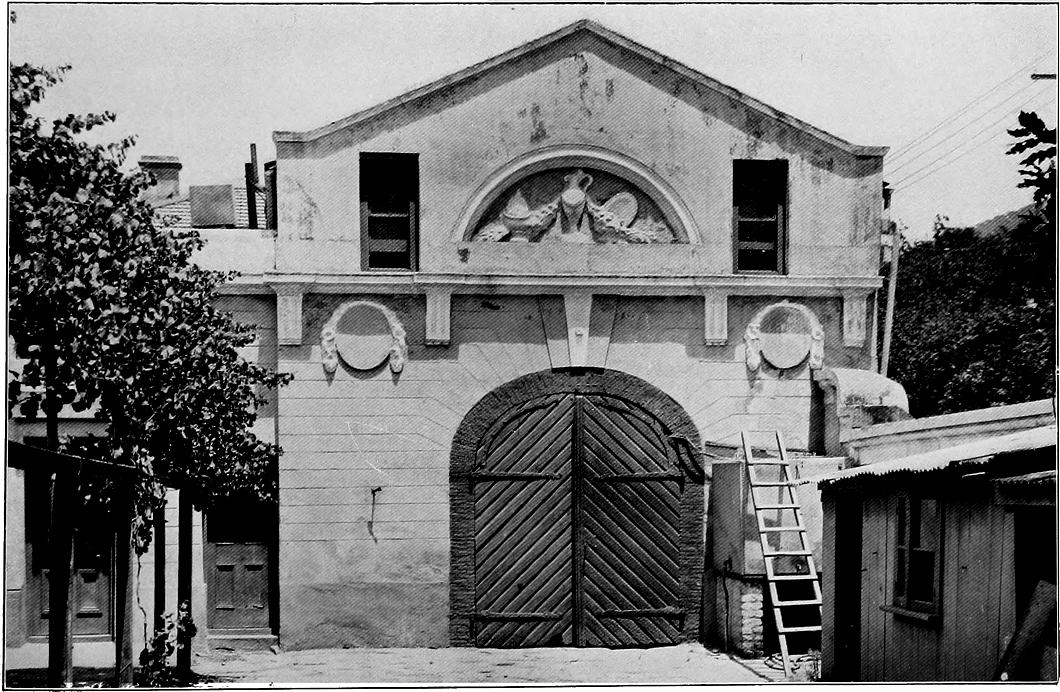
With all of Suburbia working from impromptu home offices set up in their garages during Covidtide — presumably clinging to their space heaters at this time of year — the subject of the residential garage came up in conversation.
America, being a land of plenty, has the very worst and the very best of home garages. The best are, if a separate structure, often in an arts-and-crafts style and ideally with a floor above perfect for extra storage, conversion to a rental unit, or space for disgruntled teenagers. If attached to the house itself, it is to the side, and only one storey, so as not to distract attention.
The worst, however, are double wide and take up most of the facade, as well documented by McMansion Hell.
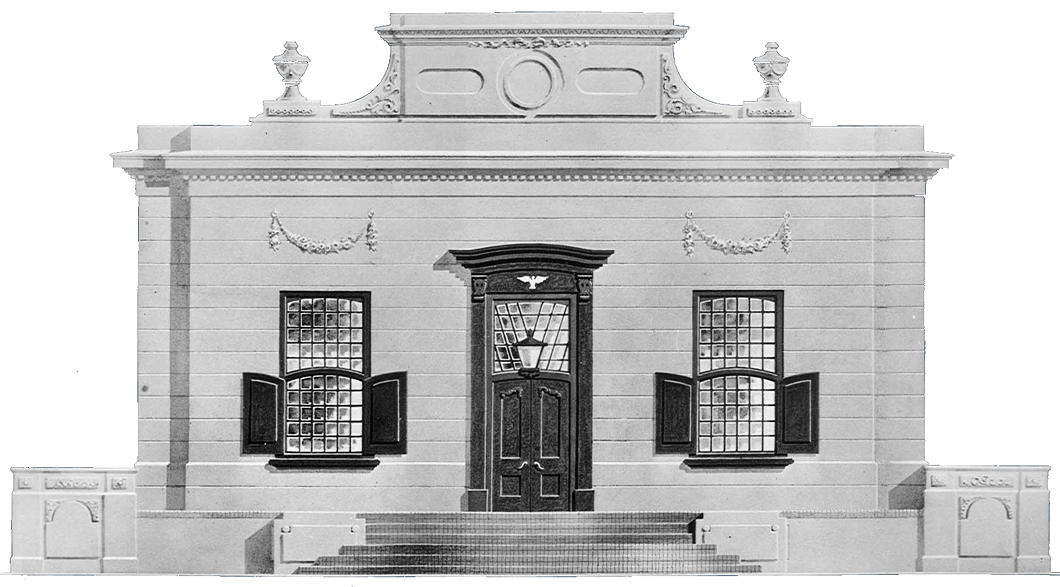
My perfect residential garage, however, is not in the States but from the Western Cape. Saasveld was the home of Baron William Ferdinand van Reede van Oudtshoorn, also 8th Baron Hunsdon in the Peerage of England.
In the 1790s, the Baron built the house on his Cape Town estate — between today’s Mount Nelson Hotel and the Laerskool Jan van Riebeeck. The elegant house and outbuildings were almost certainly the work of Louis Michel Thibault, the greatest architect of the Cape Classical style.
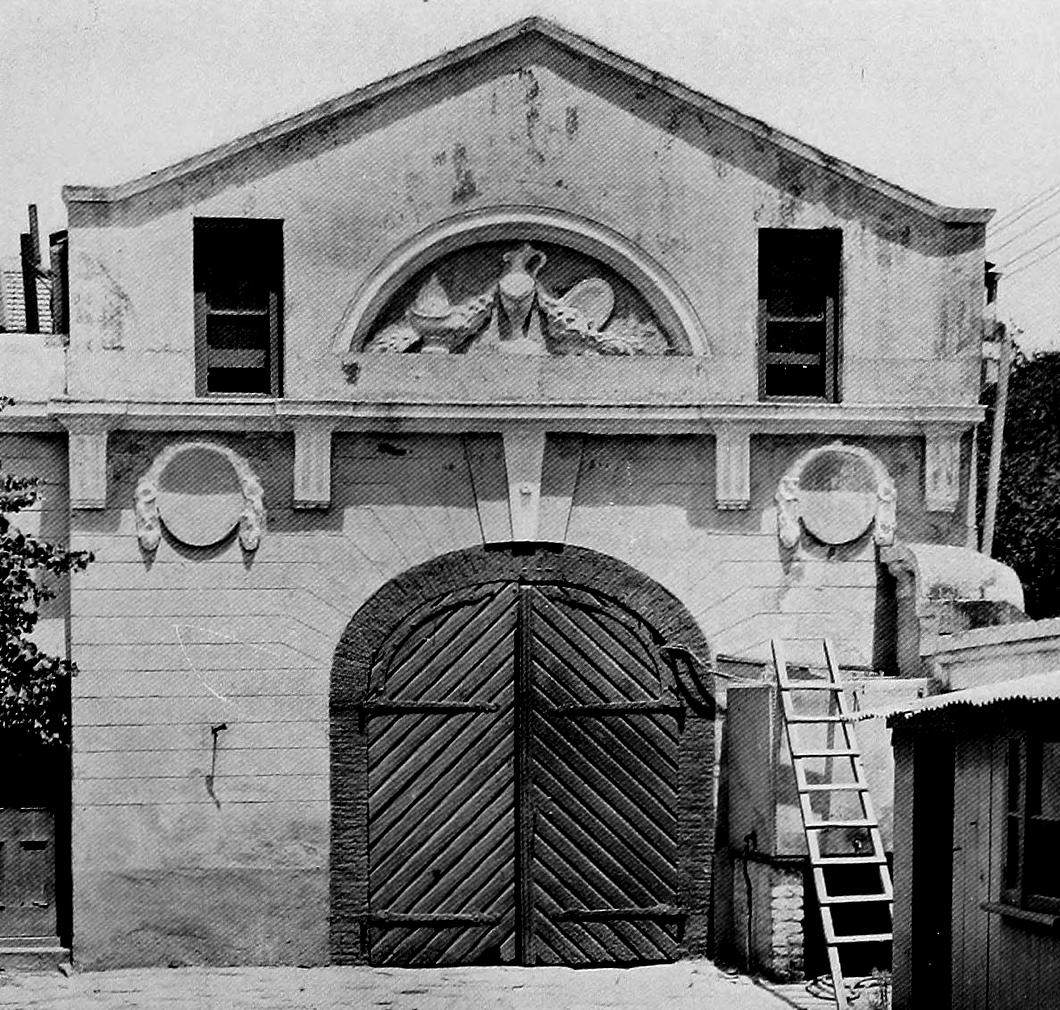
Behind the house were two flanking wine cellars linked by a colonnade, at least one of which (above) was eventually put to use as a coach house or garage and photographed by Arthur Elliott.
Unfortunately the house and its grounds fell into ruin and the Dutch Reformed Church bought the site for development and decided to demolish Saasveld. Architectural elements from the house were preserved and eventually re-assembled at Franschhoek where a reconstructed Saasveld serves as the Huguenot Memorial Museum today.
As Mijnheer van der Galiën reports, however, the tomb of William Ferdinand is still at the original site.
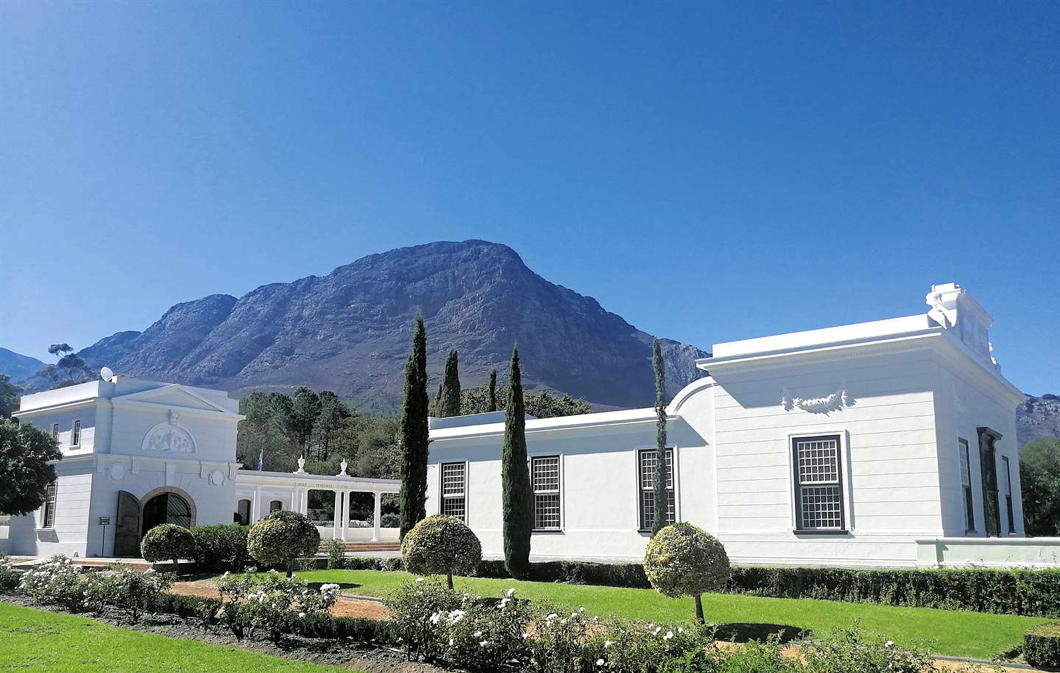
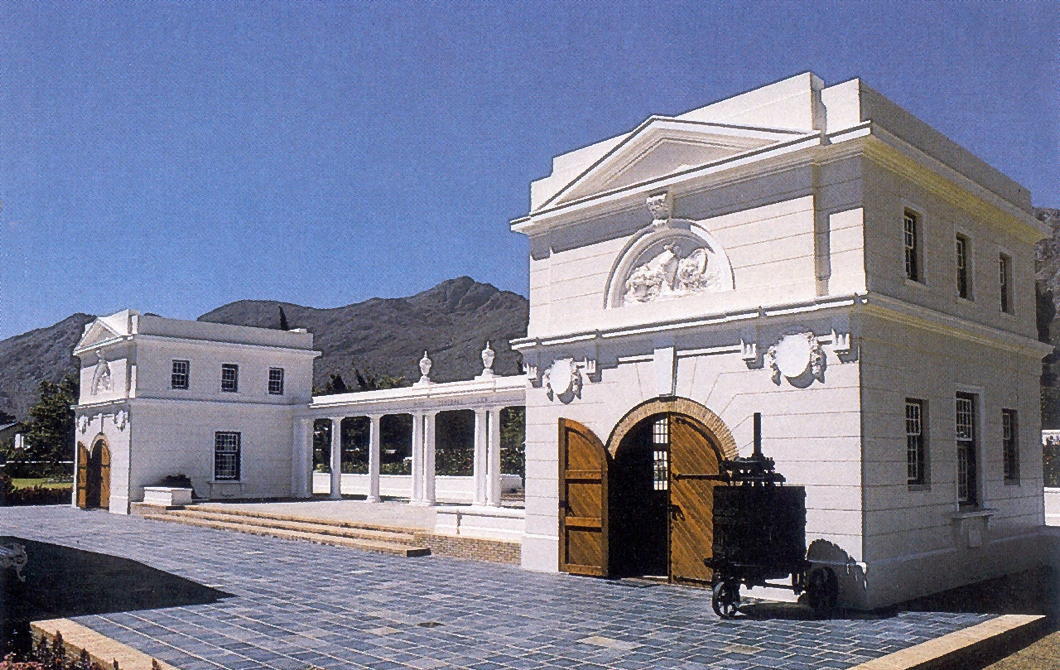
Here in Franschhoek the matching wine-cellars-turned-coach-houses are reproduced with their linking colonnade. And I still can’t help but think that — so long as you could fit a Land Rover through the doors — they would make the perfect home garage.
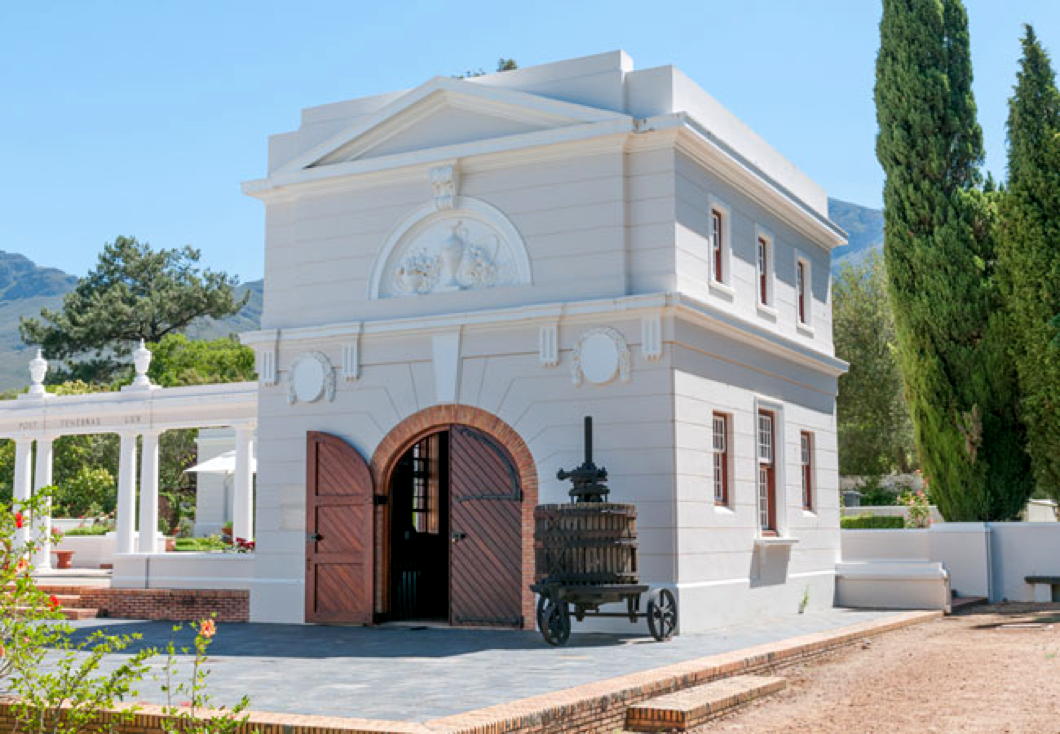
Staats Long Morris
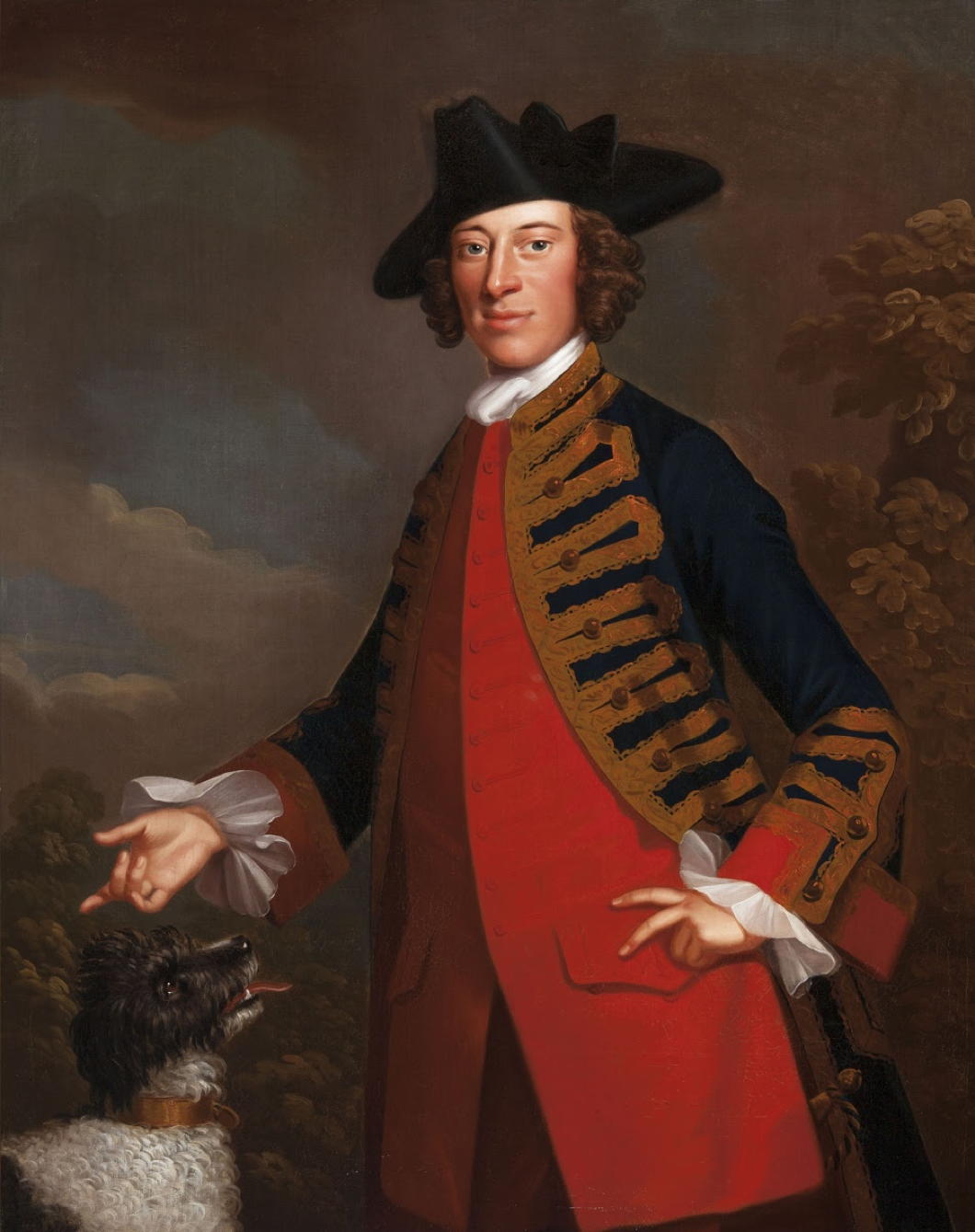
Everyone knows about Gouverneur Morris, scion of one of New York’s great landowning families and given the moniker ‘penman of the Constitution’. As a signer of the Declaration of Independence his half-brother Lewis Morris III was a fellow ‘founding father’. Less well-remembered is his other half-brother Staats Long Morris (1728–1800).
Their father Lewis Morris II was the second lord of Morrisania, the feudal manor that covered most of what is now the South Bronx and has given its name to the smaller eponymous neighbourhood today.
Staats and Gouveneur owe their distinctive Christian names to the family names of their respective mothers.
Lewis II married Katrintje Staats who provided him with four children. After Katrintje died in 1730, Lewis married Sarah Gouverneur, daughter of the Amsterdam-born Isaac Gouverneur. Sarah’s uncle Abraham was Speaker of the General Assembly of the Province of New York, a role Lewis Morris II eventually filled.
Staats was born at Morrisania on 27 August 1728 and studied at Yale College in neighbouring Connecticut as well as serving as a lieutenant in New York’s provincial militia. He switched to the regular forces in 1755 when he obtained a commission as captain in the 50th Regiment of Foot, moving to the 36th in 1756.
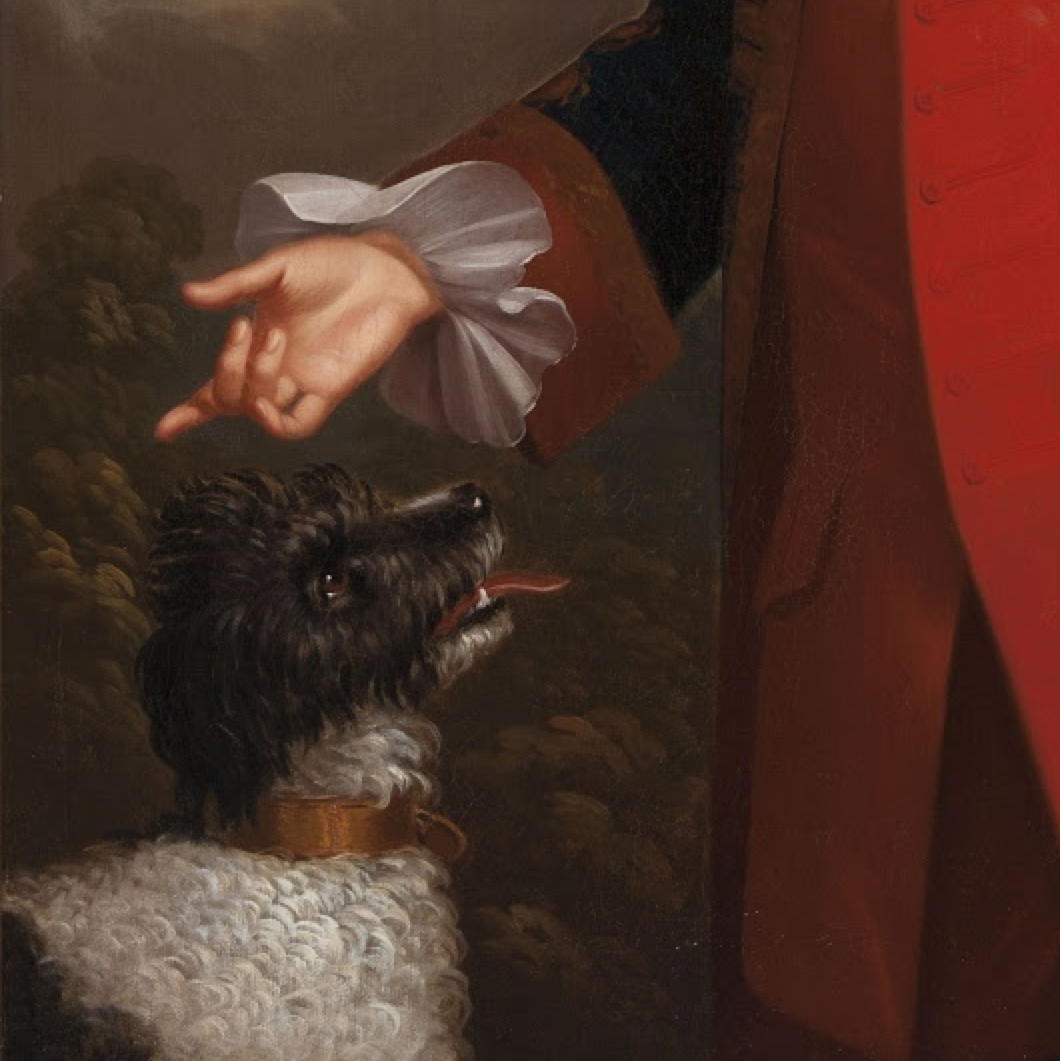
Around that time Catherine, Duchess of Gordon, the somewhat eccentric widow of the third duke, was on the lookout for a second husband and Staats — though American, mere gentry, and ten years her junior — met with her approval. They were married in 1756 and Staats moved in to Gordon Castle to live as the Dowager Duchess’s husband.
‘He conducted himself in this new exaltation with so much moderation, affability, and friendship,’ a newspaper reported in 1781, ‘that the family soon forgot the degradation the Duchess had been guilty of by such a connexion, and received her spouse into their perfect favour and esteem.’
With the Duchess’s patronage, Lieutenant-Colonel Staats raised the 89th Regiment of Foot — “Morris’s Highlanders” — from the Scottish counties of Aberdeenshire and Banffshire though she was extremely cross when her new husband’s regiment was despatched to India where it took part in the siege of Pondichery.
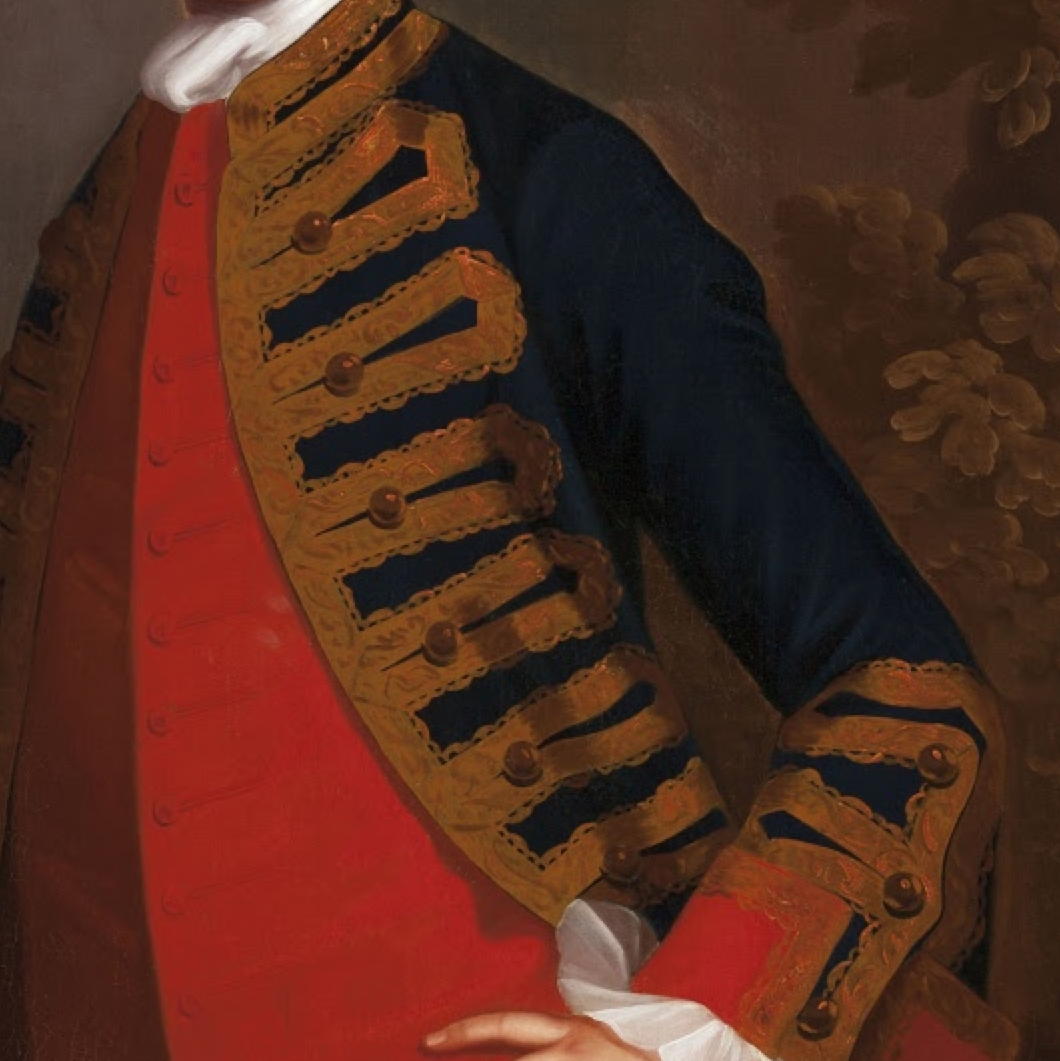
In the event, Morris delayed following his regiment to India, leaving England in April 1762 and remaining there only until December 1763. When the young fourth Duke of Gordon came of age the following year, Staats turned his eyes to America and engaged in land speculation there. In 1768 he and the Duchess even went to visit their purchases in the new world, returning to Scotland in the summer of the following year.
With the fourth Duke’s help, and on the eve of the revolutionary stirrings in North America, Staats was elected to the British parliament for the Scottish seat of Elgin Burghs in 1774. He managed to hold on to it for the next ten years. Was this New Yorker the first Yale man to be elected to Parliament? I can’t find any before him, but more thorough research might prove fruitful.
In 1786 he inherited the manor of Morrisania but with the intervening separation between Great Britain and most of her Atlantic colonies General Morris thought it best to sell it on to his brother Gouverneur.
Though he had rejected a future in the world into which he had been born, Staats did return to North America in a professional capacity in 1797 when he was appointed governor of the military garrison at Quebec in what by then was Lower Canada.
Morris died there in January 1800, but his earthly remains were sent back to Britain where he was interred in Westminster Abbey — the only American to receive that honour.
Articles of Note: 15.I.2021

• Autumn and winter are a time for ghouls and ghosts and eery tales. At Boodle’s for dinner two or three years ago I sat next to the wife of a friend and exchanged favourite writers. I gave her the ‘Transylvanian Tolstoy’ Miklos Banffy, in exchange for which she introduced me to the English writer M.R. James — whose work I’ve immensely enjoyed diving into. The inestimable Niall Gooch writes about Christmas, Ghosts, and M.R. James, as well as pointing to Aris Roussinos on how Britons’ love for ghostly tales is a sign of (little-c) conservatism.
• There can be few figures in English history more ridiculous than Sir Oswald Mosley. But the Conservative MP who became a Labour government minister and then British fascist führer-in-waiting was also forceful in his condemnation of the savagery unleashed by the Black-and-Tans. In 1952 a local newspaper in Ireland announced that Sir Oswald and Lady Mosley “charmed with Ireland, its people, the tempo of its life, and its scenery” had taken up residence at Clonfert Palace in Co. Galway. “Sir Oswald,” the paper noted with amazing restraint, “was the former leader of a political movement in England.” Maurice Walsh presents us with the history of Mosley in Ireland.
• The death of the late Lord Sacks, Britain’s former Chief Rabbi, was the subject of much lament. Rabbi Sacks was obviously no Catholic, but his intellect, frankness, and generosity were much appreciated by Christians. Sohrab Ahmari, one of the editors at New York’s most ancient and venerable daily newspaper, offers a Catholic tribute to Jonathan Sacks.
• “Education, Education, Education” has become a mantra in the past quarter-century and while there is a point there’s also a certain error of mistaking the means to an end for the end itself. After all, in the 1930s Germany was the most and highest educated country in the world. At Tablet, probably America’s best Jewish magazine, Ashley K. Fernandes explores why so many doctors became Nazis.
• Fifty years ago the great people of the state of New York rejected both the Republican incumbent and a Democratic challenger to elect the third-party Conservative candidate James Buckley as the Empire State’s senator in Washington. At National Review Jack Fowler tells the gleeful story of the unique circumstances that brought about this victory for Knickerbocker Toryism and how Mr Buckley went to the Senate.
Benedict of Palermo
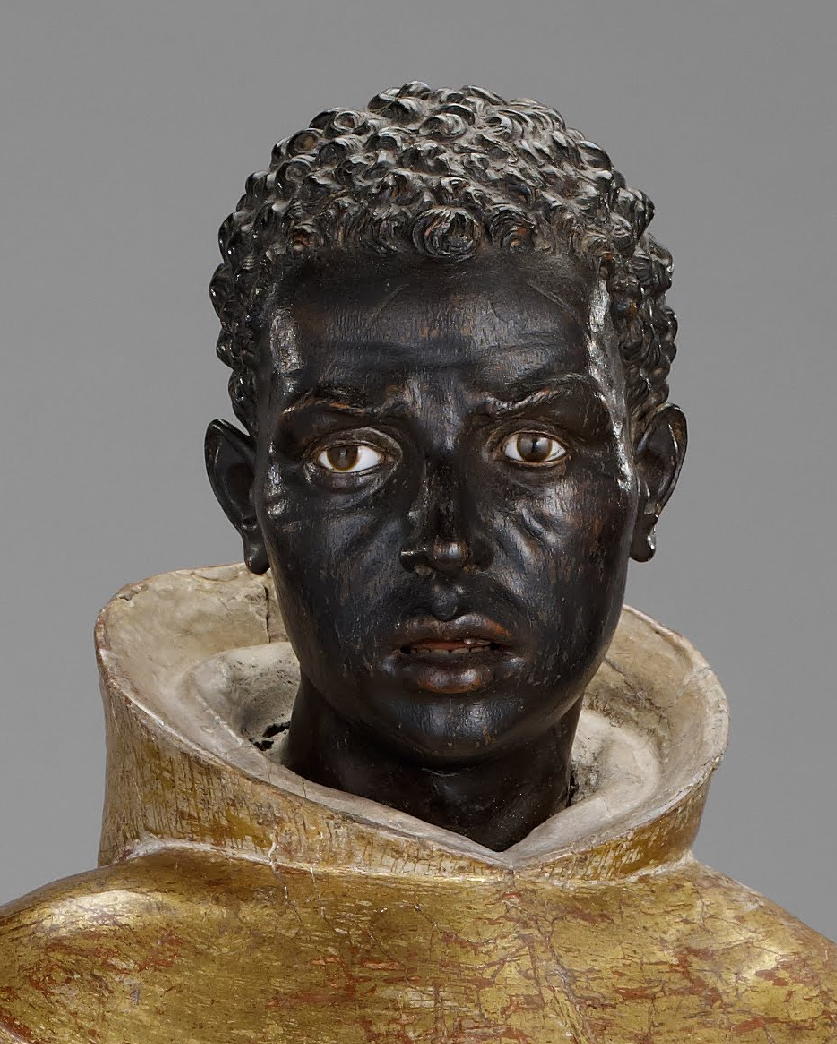
The island of Sicily is a cross-section of the numerous kingdoms and empires which have ruled and inhabited it from the Phoenecians down to the present day. During the Norman conquest of the island — those Normans did get around — many Lombards came to help secure the Normans’ rule over the existing Sicilians who were mostly Greek and Arab. The Gallo-Italic dialect of those Lombards is still spoken in a few towns and villages speckled across the island and the settlements they founded are known as the Oppida Lombardorum.
In one such Lombard town, San Fratello, in the 1520s a son was born to an enslaved couple named Cristoforo and Diana whose piety was so highly regarded that their master granted this first-born son, Benedetto (Benedict), his freedom from birth.
From his earliest days Benedict was prone to solitude to the extent that he was mocked by his peers, in addition to being insulted frequently for his black skin. As a teenager he left the family home and became a shepherd but gave whatever he could to help the poor and those even less fortunate than him.
Discerning the call to solitude, Benedict entered the hermitage of Santa Domenica in Caronia but his reputation for holiness was such that the pious people of the island began to visit him and implore him for his prayers and miracles.
Accompanied by another member of the community, Benedict fled to other places around the island, offering great and severe penances in reparation for the sins of humanity, but no matter where he went within days the faithful had found out and pestered him.
When the founder of the hermetic community at Santa Domenica died, the brothers elected Benedict his successor, despite his lack of education and illiteracy. Benedict returned to lead the community until it was abolished in 1562 by the reforms of Pope Pius IV who urged independent groups of Francis-inspired hermits to regularise themselves into existing Franciscan orders.
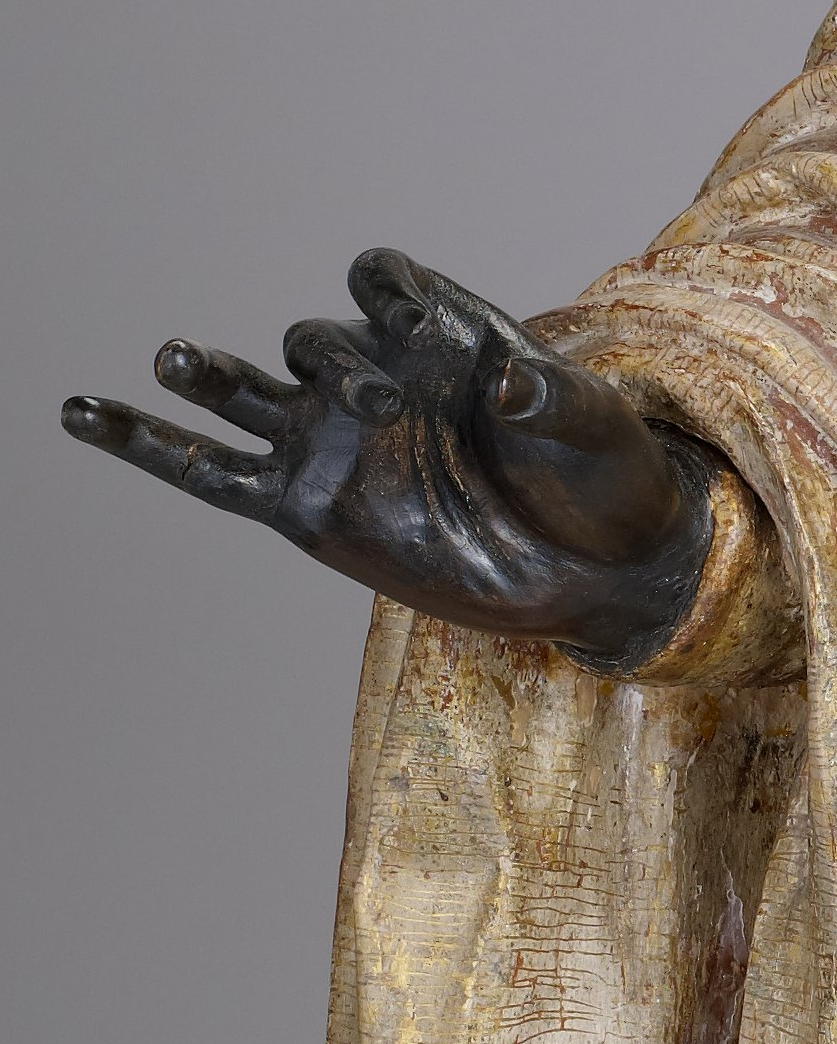
Benedict went first to a Franciscan friary in Giuliana before settling into that of Santa Maria di Gesù in Palermo, the primary city of Sicily. Having been a superior of his old community, Benedict arrived at the Palermo community as a simple cook but even here his piety and talents were recognised. He was first put in charge of the novices and then, in 1578, his confrères elected him their custos or superior though he was only a brother rather than a priest.
He was known as a miracleworker across the island, but it was not only the poor, the sick, and the destitute who flocked to Benedict to seek his help. Theologians and men of learning came to visit this humble and uneducated friar. Even the viceroy of the island was known to take his counsel on important affairs of state.
In his later years, Benedict returned to being the cook of the friary until his death in April 1589. By that time the whole island of Sicily — Greeks, Arabs, Latins, all — revered this poor, humble, and unlettered friar.
Sicily’s ruler, King Philip III of Spain, ordered a magnificent tomb to be built to house Benedict’s remains in the friary of Santa Maria di Gesù, and in death his cult spread far beyond the island.
St Benedict of Palermo — or Benedict the Moor — was beatified by Benedict XIV in 1743 and canonised by Pius VII in 1807. Over the centuries, many non-white Christians came to implore his intercession and he became particularly popular among natives and mixed-race peoples in South America, in Africa itself, and amongst African-Americans in the United States.
This statue is believed to be the work of the Sevillian sculptor José Montes de Oca and was carved in the 1730s. Long in a private collection in Milan, since 2010 it has formed part of the collection of the Minneapolis Institute of Art.
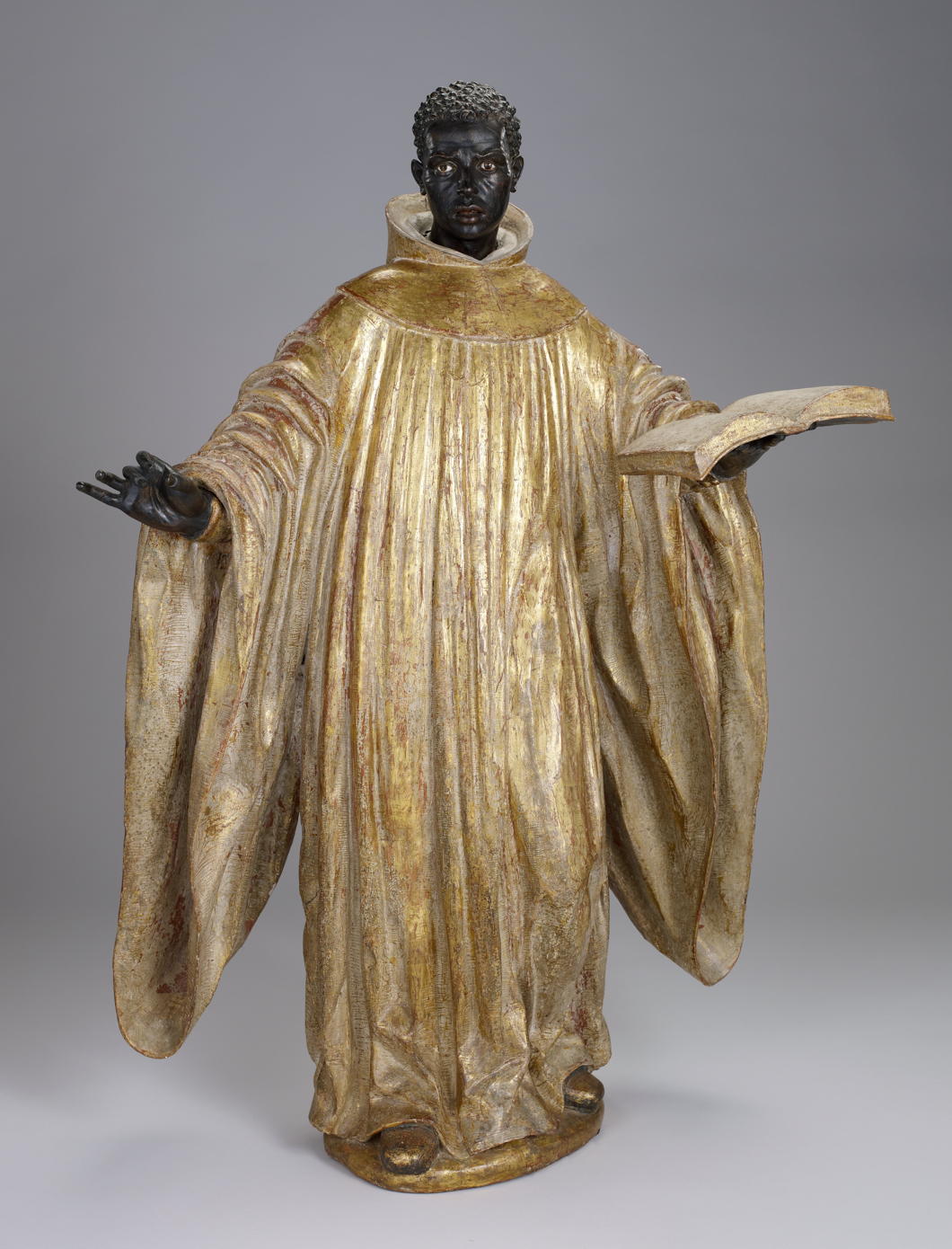
Search
Instagram: @andcusack
Click here for my Instagram photos.Most Recent Posts
- Silver Jubilee November 21, 2024
- Articles of Note: 11 November 2024 November 11, 2024
- Why do you read? November 5, 2024
- India November 4, 2024
- The Lithe Efficiency of the Old Constitution November 4, 2024
Most Recent Comments
Book Wishlist
Monthly Archives
Categories


